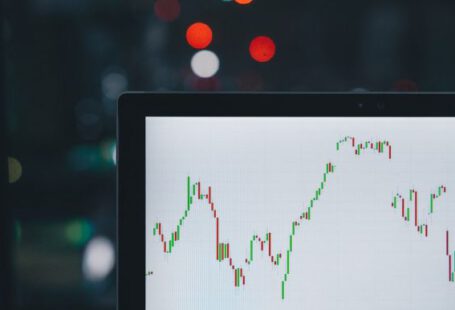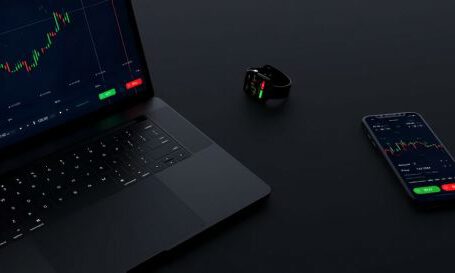Market forecasting is a crucial aspect of trading that allows investors to make informed decisions about buying and selling securities. While there are various methods of market forecasting, trading tools play a significant role in providing accurate predictions and insights into market trends. In this article, we will explore the importance of trading tools in market forecasting and how they can enhance investment strategies.
Understanding Market Trends with Technical Analysis
One of the primary uses of trading tools in market forecasting is through technical analysis. Technical analysis involves studying historical price patterns and market trends to predict future price movements. Trading tools such as charts, indicators, and oscillators help traders identify patterns, support and resistance levels, and market trends.
Charts provide visual representations of market data, enabling traders to analyze price movements over a specific time period. They can be used to identify trends, such as uptrends, downtrends, or sideways movements. By studying chart patterns, traders can make predictions about future price movements and make informed trading decisions.
Indicators and oscillators are mathematical calculations applied to market data to generate trading signals. They help traders identify overbought or oversold conditions, trend reversals, and potential entry or exit points. Popular indicators include moving averages, Relative Strength Index (RSI), and Moving Average Convergence Divergence (MACD).
Risk Management and Trade Execution with Trading Tools
Trading tools also play a vital role in managing risks and executing trades effectively. Risk management is crucial in trading to protect capital and minimize losses. Trading tools such as stop-loss orders and take-profit orders help traders set predefined levels at which they will exit a trade. These tools ensure that traders do not incur significant losses if the market moves against their position.
Additionally, trading tools can provide real-time market data, news feeds, and economic calendars. These tools help traders stay updated with the latest market developments, fundamental factors, and economic events that can impact market prices. By staying informed, traders can adjust their strategies accordingly and make timely trading decisions.
Automated Trading Systems and Algorithmic Trading
Advancements in technology have given rise to automated trading systems and algorithmic trading. These trading tools use complex algorithms and mathematical models to execute trades automatically based on predefined rules and conditions. Automated trading systems can analyze vast amounts of data and execute trades at high speeds, providing traders with a competitive edge.
Algorithmic trading is particularly popular among institutional investors and hedge funds. These trading tools can exploit market inefficiencies, execute trades at optimal prices, and manage portfolios more efficiently. Algorithmic trading also reduces human error and emotional biases that can affect trading decisions.
The Limitations of Trading Tools
While trading tools are valuable in market forecasting, it is essential to recognize their limitations. Trading tools are based on historical data and mathematical calculations, which means they cannot predict unforeseen events or sudden market shifts. Traders should use trading tools as a supplement to their own analysis and judgment.
Furthermore, trading tools require a certain level of knowledge and experience to interpret and use effectively. Traders should familiarize themselves with the different tools available and learn how to apply them in their trading strategies. It is also crucial to regularly update and adapt trading tools as market conditions change.
In conclusion, trading tools play a significant role in market forecasting by providing valuable insights into market trends, risk management, and trade execution. Technical analysis tools enable traders to identify patterns and trends, while risk management tools help protect capital and minimize losses. Automated trading systems and algorithmic trading enhance trading efficiency and provide a competitive edge. However, it is important to remember that trading tools have limitations and should be used in conjunction with other analysis techniques. Traders should continually update their knowledge and adapt their strategies to changing market conditions.





